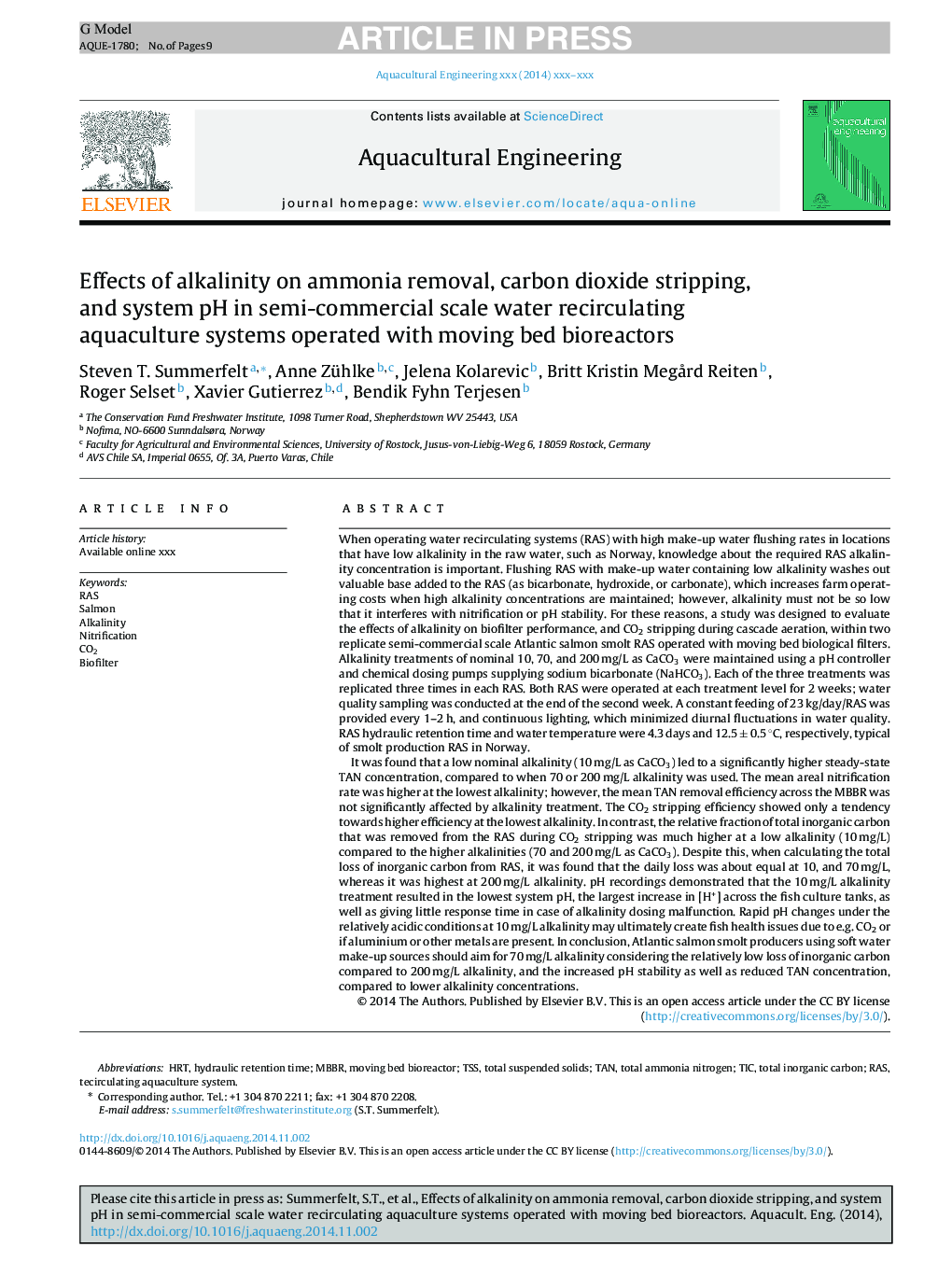| Article ID | Journal | Published Year | Pages | File Type |
|---|---|---|---|---|
| 6381329 | Aquacultural Engineering | 2015 | 9 Pages |
Abstract
It was found that a low nominal alkalinity (10Â mg/L as CaCO3) led to a significantly higher steady-state TAN concentration, compared to when 70 or 200Â mg/L alkalinity was used. The mean areal nitrification rate was higher at the lowest alkalinity; however, the mean TAN removal efficiency across the MBBR was not significantly affected by alkalinity treatment. The CO2 stripping efficiency showed only a tendency towards higher efficiency at the lowest alkalinity. In contrast, the relative fraction of total inorganic carbon that was removed from the RAS during CO2 stripping was much higher at a low alkalinity (10Â mg/L) compared to the higher alkalinities (70 and 200Â mg/L as CaCO3). Despite this, when calculating the total loss of inorganic carbon from RAS, it was found that the daily loss was about equal at 10, and 70Â mg/L, whereas it was highest at 200Â mg/L alkalinity. pH recordings demonstrated that the 10Â mg/L alkalinity treatment resulted in the lowest system pH, the largest increase in [H+] across the fish culture tanks, as well as giving little response time in case of alkalinity dosing malfunction. Rapid pH changes under the relatively acidic conditions at 10Â mg/L alkalinity may ultimately create fish health issues due to e.g. CO2 or if aluminium or other metals are present. In conclusion, Atlantic salmon smolt producers using soft water make-up sources should aim for 70Â mg/L alkalinity considering the relatively low loss of inorganic carbon compared to 200Â mg/L alkalinity, and the increased pH stability as well as reduced TAN concentration, compared to lower alkalinity concentrations.
Keywords
Related Topics
Life Sciences
Agricultural and Biological Sciences
Aquatic Science
Authors
Steven T. Summerfelt, Anne Zühlke, Jelena Kolarevic, Britt Kristin MegÃ¥rd Reiten, Roger Selset, Xavier Gutierrez, Bendik Fyhn Terjesen,
